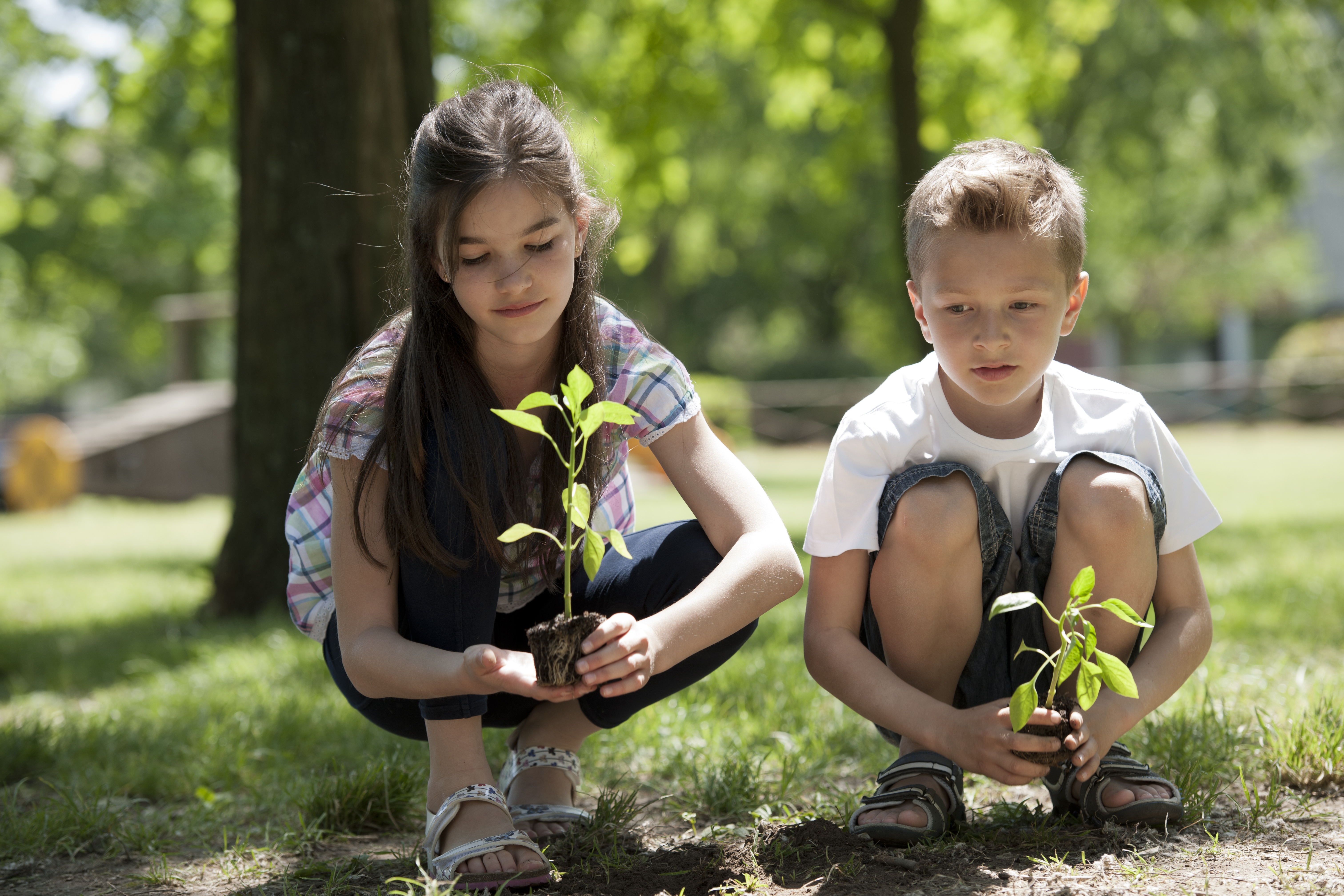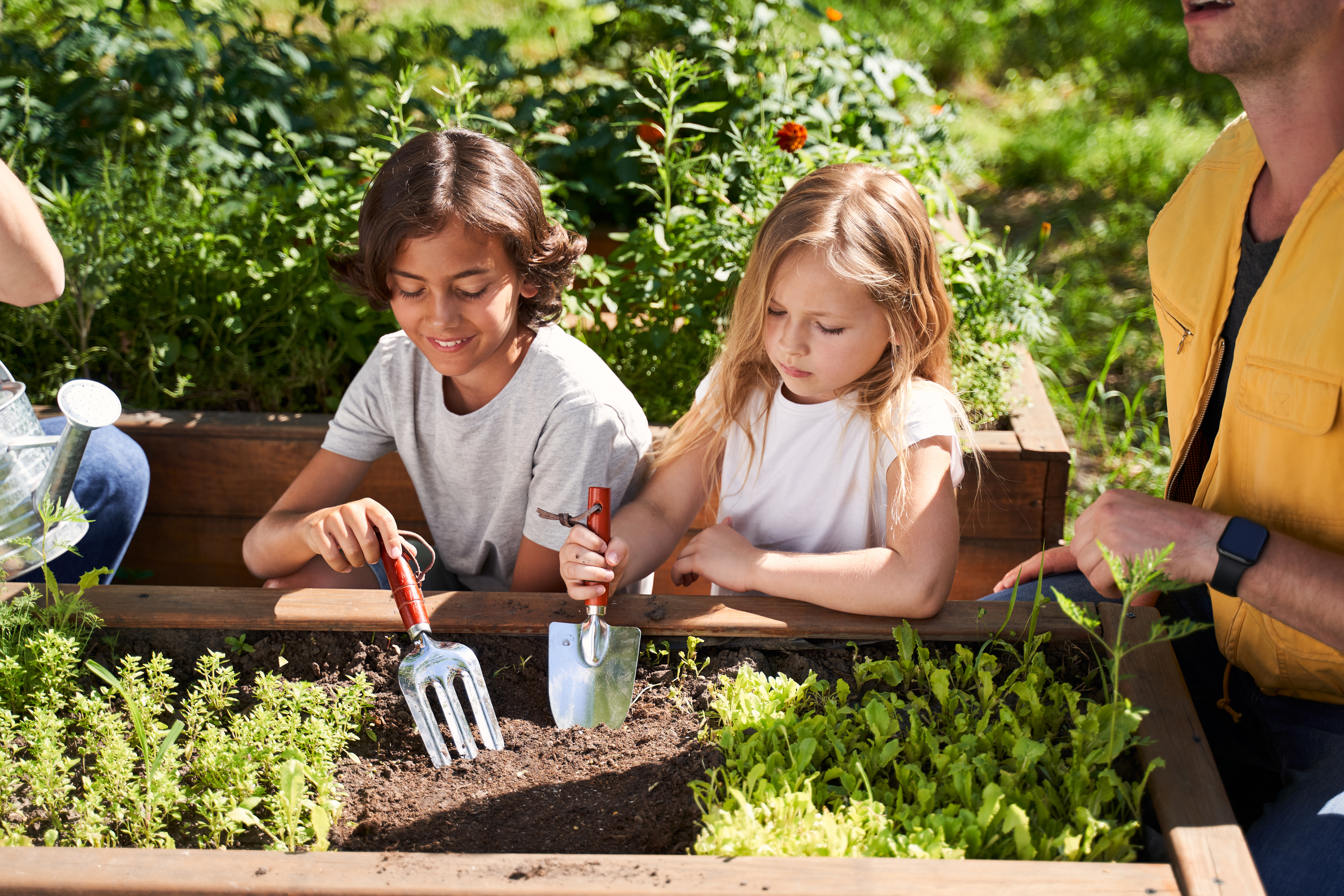There is so much ground to cover when discussing plant topics with your children. Plants encompass many huge topics. Whether you are learning about plants together or modifying your garden for your own use, these topics are interesting and fun for little kids.
Here are six fun and simple plant facts to teach kids.
- 1. Annuals are short-lived flowering plants; perennials are the opposite
- 2. Shrubs are mainly decorative bush-like plants
- 3. Herbs are small aromatic plants
- 4. Succulents have thick juicy-like leaves that hold water
- 5. Ground cover are useful because they are strong
- 6. Edible plants are fun because you eat them
The following post will briefly explain these topics so that you can pass along this exciting information to your kids! Remember to keep it small and relevant to ensure that what you introduce to your family applies to your situation to reinforce learning.
There is so much to learn about plants! Don’t stress; keep it simple, relatable, and fun!

1. Annuals Are Short-lived Flowering plants; Perennials Are The Opposite
Annuals flower and die within the year, but perennials, like trees, are the opposite. They flower and live for two years or more. Perennials look dead in the off-season, but they are just protecting themselves from the elements and will return. Both are a good pick for gardening with your children because they are easy to find, affordable, and simple to plant. Be sure to read the instructions on your tag to plant them in an appropriate spot.
Annuals: morning glory, lupine, nasturtim, marigolds, petunias
Perennials: mint, hostas, clover, rose, aloe vera
2. Shrubs are Mainly Decorative Bush-like Plants
They are usually dense, full of colors, unique shapes, and exciting patterns. They are shorter than trees and typically get planted in botanical gardens and residential neighborhoods. Many different kinds of shrubs are helpful for family gardens.
They are sturdy, beautiful, and generally easy to maintain. They can be placed along the perimeter of a yard in fun patterns or used to create a solo masterpiece where only one stands out in an area of the yard. Please read the potting label or talk to your local hardware store associates to learn more about where they should be– full sun, partial, full shade.
hostas, azalea, rhododendorons, lilacs, fuchias
3. Herbs are Small Aromatic Plants
Small herbaceous plants used for cooking and decoration can be called herbs. Herbs are easily accessible, very tough (mostly), and reliable. They take a small amount of effort for a high reward, although a few are more challenging to keep alive.
Herbs can vary in maintenance depending on their needs. Most herbs are in a tiny pot and can quickly start in a home and then go outside when the time is right. They are versatile, aromatic, and easy for little hands. Sturdy herbs like lavender and rosemary also spread quickly. Make sure they have an appropriate spot for their lifespan and proper sun exposure.
basil, dill, rosemary, lavender, coriander, sage, mint, parsley

4. Succulents Have Thick Juicy-like Leaves That Hold Water
Typically an ornamental plant, succulents are beautiful, sturdy, and kid-friendly. They can be indoors or outdoors (depending on the climate) and are easy for tiny fingers to grasp and identify. They have unique shapes, colors, and patterns. Some or most are considered drought resistant, so they are easy to keep alive during busy schedules.
Some of them have scientific names but don’t be scared. Re-name them an easy-to-remember name that reminds you and your family of its characteristics, or ask a neighbor or friend if there is another term. Succulents can be helpful to consider for your home or garden because of their natural beauty and strength.
echeveria (hen-and-chicks), cacti, sedum, cotyledon, aloe
5. Ground Cover are Useful Because They Are Strong
These plants are exactly what they sound like– ground cover. Most of these plants that spread over an area of ground are easy to maintain, strong, and resilient. They can be easy to plant for kids and beautiful too. Even if your kids accidentally step in them, they will bounce back pretty quickly. Be sure to purchase a ground cover resistant to tiny feet like vinca minor because it won’t easily snap or break when kids climb or trample on it. Word of caution: some ground cover can be stringy!
ivy, vinca minor, turf lawn, bugleweed
6. Edible Plants are Fun Because You Eat Them
Plants that you can eat right out of the ground are called edible plants. These can be anything you typically see at a store and can be a flowering plant or herb. These are the most fun, by far. Kids love to have a project that yields a high reward. Plants that are easy to handle and eaten are a winner in my family. Again, be sure that you try to follow the instructions on the plant to find an area for it to grow and be happy. Plants are a learning experience, and they can be picky.
peas, beans, tomatoes, radishes, squash, tomatoes strawberries, cucumbers, carrots, arugula, brussel sprouts, beets, kale, swiss chard
Conclusion
Planting is a great activity for families, but sometimes, people don’t know where to start. When kids are involved, keep facts interesting, easy, and relevant to their learning environment, so they absorb the information they need.
